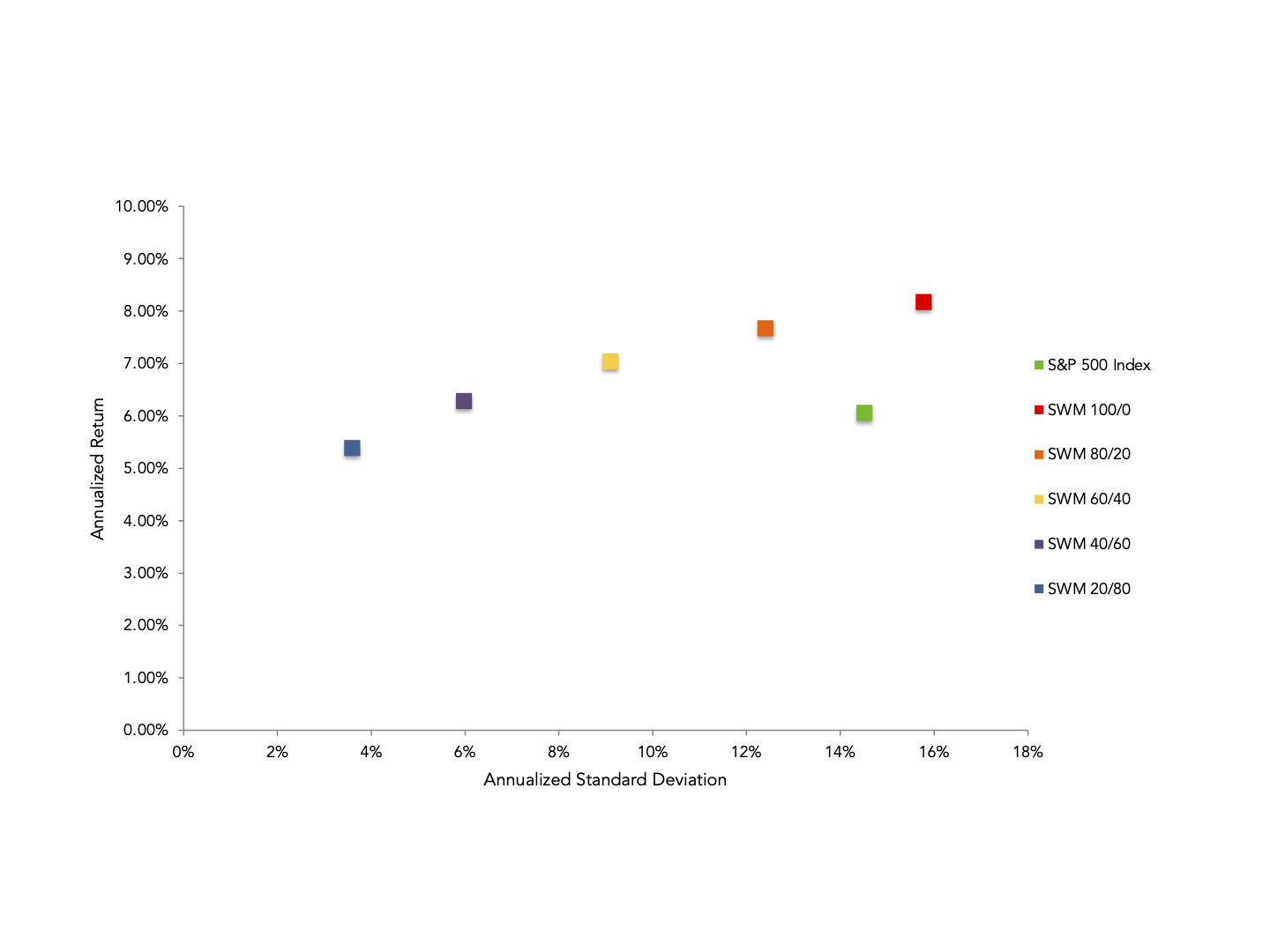As a young professional, on your way to accumulating savings that will fund many of your future financial goals, it’s essential that you understand what will improve your chances of having a successful investment experience.
One of the keys to successful investing is diversification. Let’s explore what diversification is, and a few of the most important reasons why it matters.
What is Diversification?
Diversification is a strategy that smart investors use to allocate (or divide) their portfolio across different types of investments – commonly called “asset classes” – that are expected to perform differently over time.
If you knew in advance which particular investment was going to perform best for the coming week, month or year – that is, you had perfect foresight or a crystal ball – you would naturally put every penny you have into that one “best performing” investment.
As we know, no one has a crystal ball or can predict the future. But, you can see that while a diversified portfolio won’t produce a return equal to the best-performing asset class, it also won’t produce a loss equal to that of the worst-performing one. In fact, investment professionals and academic researchers agree that proper portfolio diversification can help reduce portfolio risk. Let’s explore how in more detail.
Diversification Eliminates Unnecessary Risk
As an investor, you have to address two types of risk.
The first type of risk is known as “systematic risk”, or market risk. This type of risk affects every business and industry. Its causes can include inflation, interest rates, exchange rates, political instability.
The Great Recession of 2008-09 is an excellent example of systematic risk. All investments were affected by this global economic event, though they were impacted in different ways. Riskier investments like stocks and real estate saw their prices collapse as investors sold them in a panic. Safer, more conservative investments, like US government bonds, saw their prices rise, as skittish investors perceived them to be “safe ports in a storm”.
It’s important to note that this type of risk can’t be reduced or eliminated by diversification. It’s a type of risk that every investor must accept.
The second type of risk is “unsystematic” or diversifiable. This risk is specific to a company, industry, market, economy, or country. The most common sources of unsystematic risk are business risk and financial risk. Because it’s diversifiable, you can reduce your exposure through proper diversification.
One example of unsystematic risk is the potential loss of a company’s key executive. Most of us are by now familiar with Elon Musk, the founder of Tesla and SpaceX. It’s not inconceivable that if Mr. Musk were to unexpectedly become incapacitated or die prematurely, Tesla’s stock price would react very negatively.
In this example, the risk is diversifiable because you can easily ensure that Tesla is a small enough portion of your portfolio that a decline in its share price doesn’t meaningfully impact your returns.
In fact, with proper diversification it’s possible to effectively eliminate all diversifiable or unsystematic risk. More on this below…
Diversification Optimizes Returns
Diversification can also “optimize” your portfolio’s returns. In this context, “optimize” means that you’re generating the maximum possible amount of return for a given amount of risk. Here’s how this works.
First, imagine that we have access to two dozen different investment types to use in our portfolio.* We can create an almost unlimited number of “mixes” – from some very focused on just one or two investments, to some that are really well diversified across all two dozen.
Now, let’s look at the historical performance of these different portfolio mixes (or allocations) over a fairly long time period. And then let’s make a simple chart that plots their annualized returns, and the variability of those returns (the “standard deviation” of the returns, to use a concept from high school statistics). We’ll mark our portfolios’ Return on the vertical axis, and their Risk on the horizontal axis.
Ideally, we’d like to see portfolios appear on our chart with high returns and no risk, right? That combination would mean a position on our chart that’s in the upper left corner – representing high return on the vertical axis, and low risk on the horizontal axis.
Look at the chart above. It plots the risk and return of several allocations over the 20-year period from January 2000 to December 2019.
What can we learn from this example, and this chart? Well, two very important things:
First, we can see that none of our allocations appear in the “ideal” position – the upper-left corner. Instead, we can see that there are several dots that plot in a sort of curve, and one dot all by itself below the curve. The dots in a curve represent different Springwater model portfolios – different combinations of the asset classes that we use in our clients’ well-diversified portfolios.
The fact that they form a curve means that you could pick any one of them, depending on your return objective or risk tolerance, and know that you’re doing the “best” that you can, given the available investments.
How do we know this is the best that you can do? Because there’s no dot that plots above the curve! The curve represents an investing concept known as an “efficient frontier”. The efficient frontier is the set of portfolios that provide the highest expected return for a given level of risk that we can be create with our menu of available investments.**
But, we can also see that there’s a dot that lies below the “efficient frontier” curve. This dot represents the performance of the S&P 500 Index (a proxy for large US company stocks) over this 20-year period. It’s a single asset class, and so an “undiversified” portfolio.
A portfolio that lies below the efficient frontier is “sub-optimal”. Why? Well, because we could improve our portfolio’s risk/return relationship simply by properly diversifying.
Look where the green dot lines up on the horizontal axis. It’s at about 15%. Now look above the green dot, and imagine that there aren’t just 5 portfolios making up our efficient frontier, but so many that all of their dots together form a smooth curve. By picking some combination of the asset classes used in our model portfolios, we could move up from the green dot to a point on the curve. And by doing so we’d be getting more return for the same level of risk.
This is why some economists refer to diversification as “the closest thing to a free lunch”.
Now let’s turn to how you can build a properly diversified portfolio.
* In practice, Springwater typically uses between 15-20 asset classes in our clients’ investment strategies.
** The efficient frontier is a concept introduced by Harry Markowitz and others in 1952. Markowitz would go on to win the Nobel Prize in economics for this work.
How to Diversify Your Portfolio
When building a properly diversified portfolio, there are a few important things to keep in mind:
The objective is to diversify across and within asset classes. In short, this means that we want to (a) include as many asset classes in our portfolio as is reasonably possible, and (b) include as many securities within each asset class as possible.
At a minimum, your portfolio should include exposure to US stocks, international stocks, real estate, bonds and cash-like instruments. At a more granular level, you should if, possible, include large and small company stocks, value and growth company stocks, stocks from companies in emerging markets like India, China and Brazil, government and corporate bonds, and domestic and international commercial real estate.
With so many asset classes to include, and understanding that we want to be well-diversified within each of them, how can we accomplish this with anything less than a multi-million dollar portfolio? Simply put, with “funds”. Mutual funds and exchange-traded funds allow investors to achieve broad diversification with very modest investment amounts. At Springwater, we favor funds from Vanguard, Dimensional Funds, Avantis, iShares, and State Street when building portfolios for our clients.
How much should you invest in each asset class? That’s an excellent question, and one that we’ll address in an upcoming article.
Getting Help with Your Investing
As a young professional, your life is likely getting busier and more complicated by the day. If you’re not 100% confident that you have the time, aptitude and affinity to manage your own investments, you should consider hiring a fiduciary financial advisor to help you. In the field of investment management, the CFA and CFP® credentials are considered the gold standard. You can find a Chartered Financial Analyst (CFA) on the CFA Institute website, and you can find a Certified Financial Planner® professional via the CFP Board, the Financial Planning Association and the National Association of Personal Financial Advisors.
Do you have questions about saving for retirement, or about building a robust plan for your financial future? Contact us today to see how our team at Springwater Wealth can help you.

